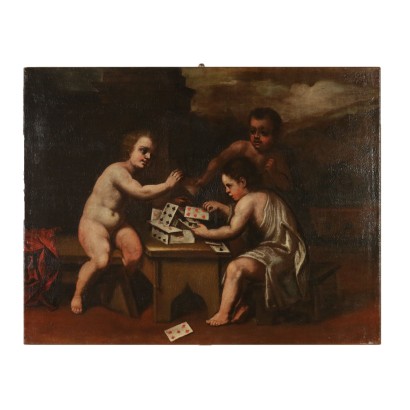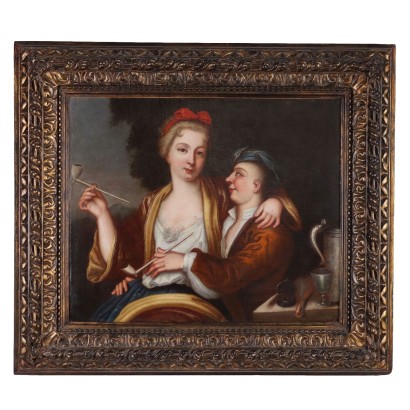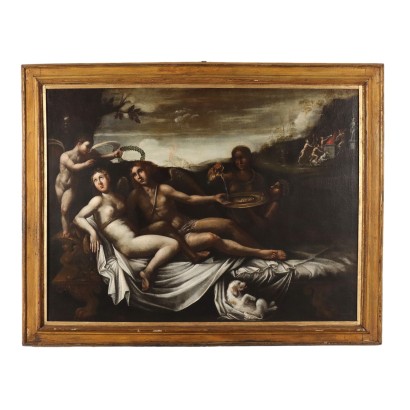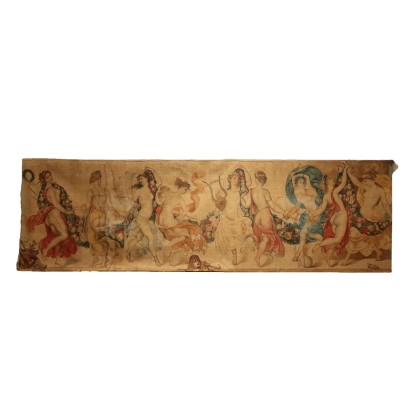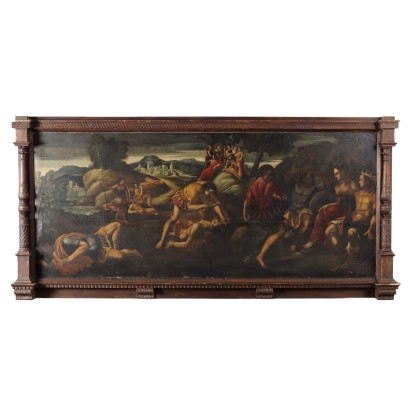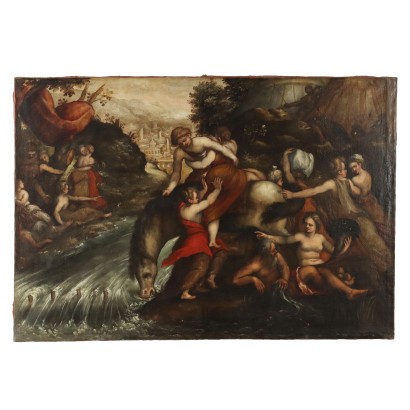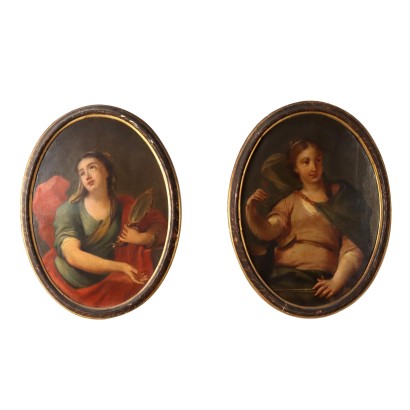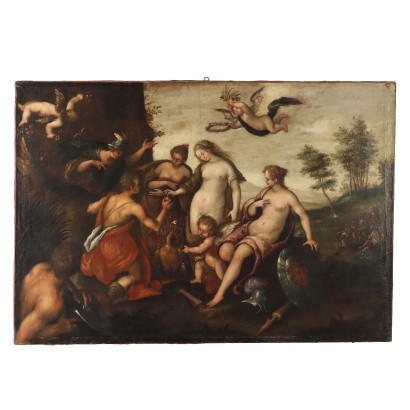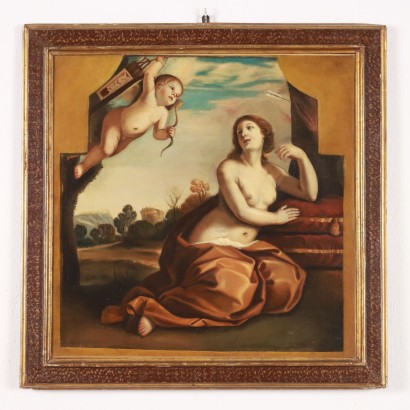ARARPI0167017
Mythological Subject Oil on Canvas Italy XVII Century
The Tale of Apollo and Marsyas
Oil painting on canvas. Northern Italian school of the seventeenth century. The large canvas derives from an engraving of 1562 by the Venetian Giulio Sanuto, who faithfully reproduced the homonymous work by Bronzino (1503-1572), currently preserved in the Hermitage; compared to the original, the engraving added the group of Muses and modified the landscape background by introducing views of the villages. The work is divided into four scenes, which must be read from right to left. The first scene depicts the musical contest between Apollo and the Silenus Marsyas, who played the flute so well that he was considered superior to the same god; the two contenders are performing, the god with the lyre and the silenus with the flute even upside down (to increase the difficulty of the undertaking), in front of King Midas and the goddess Minerva, recognizable by her attributes, the helmet, the spear and the shield. In the second scene Apollo is intent on skinning Marsyas, to punish him for having won the musical contest; lean on the ground next to him, his cloak and lyre. In the third scene, it is King Midas who is punished by the god for having preferred Marsyas to him: Apollo is putting the donkey's ears on Midas, while Minerva is watching. Finally, the fourth scene, in the foreground on the left, is characterized by a particular figure, identified in the faithful servant and barber of the king: since Midas had ordered him to keep the secret on his donkey ears, not being able to let off steam otherwise, he dug a hole in the ground and yelled into there his secret; in that place, however, legend has it that a bush of reeds grew that with the wind whispered "King midas has donkey ears", thus revealing the dreaded secret. The painting has been previously restored and relined, but currently needs any further color recovery. On the back in pencil there is an old attribution to the Ferrara school ("Ercole da Ferrara"). It is presented in a late 19th century style frame.

